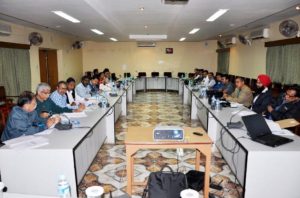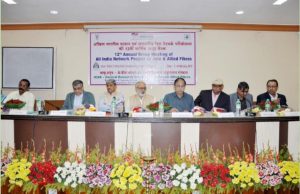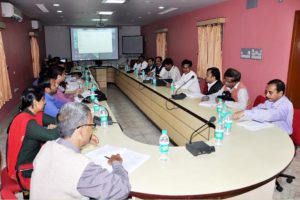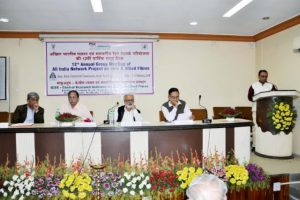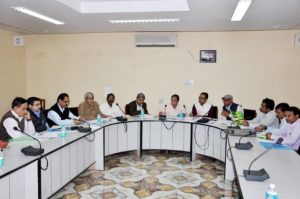
News Scroll
Welcome To All India Network Project on Jute and Allied Fibres
All India Network Project on Jute and Allied Fibres previously known as All India Coordinated Research Project (AICRP) on Jute & Allied Fibres was sanctioned and implemented by ICAR in October, 1967 and the Project started functioning from its headquarters at JARI, Barrackpore, West Bengal. For a brief period during early seventies the Project functioned from ICAR-National Institute of Research for Jute and Allied Fibres Technology, Kolkata but from April, 1974 it was again shifted to its present location at ICAR-Central Research Institute for Jute and Allied Fibres. The AICRP structure was modified as All India Network Project on Jute and Allied Fibres in year 2004.
Initially (1969), four centres viz, Jute Research Station, Nagaon, Assam; Jute Research Station, Katihar, Bihar; Jute Research Station, Bahraich, UP and Agricultural Research Station, Amadalavalasa, Telangana (for mesta) participated. Subsequently, four centres namely, Jute Research Station, Kendrapara, Odisha (1970); TRRI, Aduthurai, T.N. (1972); UBKV, Coochbehar (1974), BKCV, Kalyani (1974) W.B. added to this programme.

Scientists working in different disciplines at various centres carry out investigations as per joint decision taken in Annual Workshop which is held around February every year generally at one of the collaborating centres. In the workshop, concerned scientists review the results of the experiments carried out during the previous crop season and formulate programme of work for succeeding season.
Before independence, most of the area under jute cultivation was in the East Bengal (Now Bangladesh) whereas most of the jute mills were situated on the bank of Hooghly River in West Bengal. Due to the partitioning of the nation it was essential to increase either area or productivity of jute to cater the need of jute fibre of the jute industries. The domestic demand of jute fibre could be fulfilled partly by increasing jute areas from 5.70 lakh ha in fifties to 9.40 lakh ha in seventies and partly by improving productivity by evolving high yielding jute varieties namely, JRO 632 (Baisakhi tossa) in tossa jute and JRC 321 in white jute as it was more remunerative than that of rice crop.



